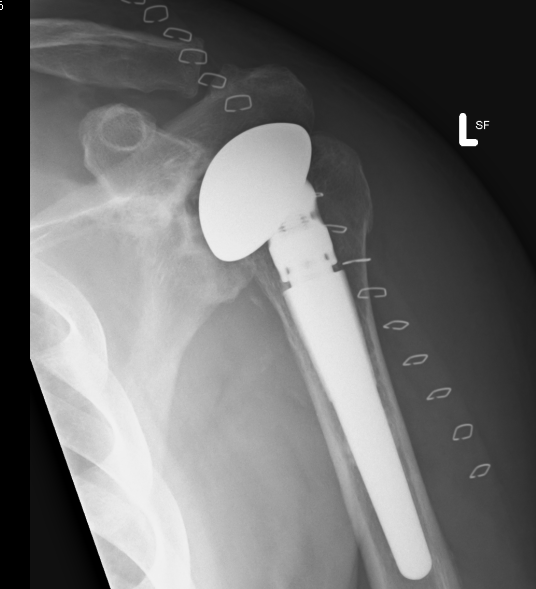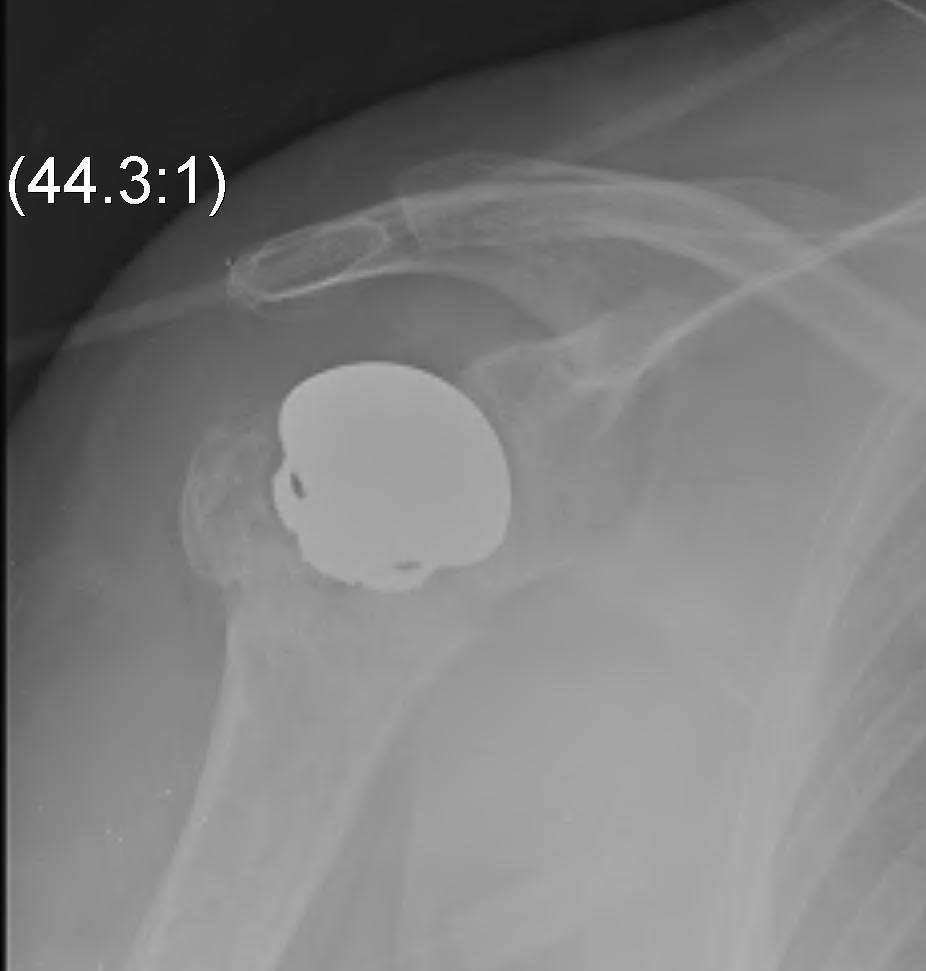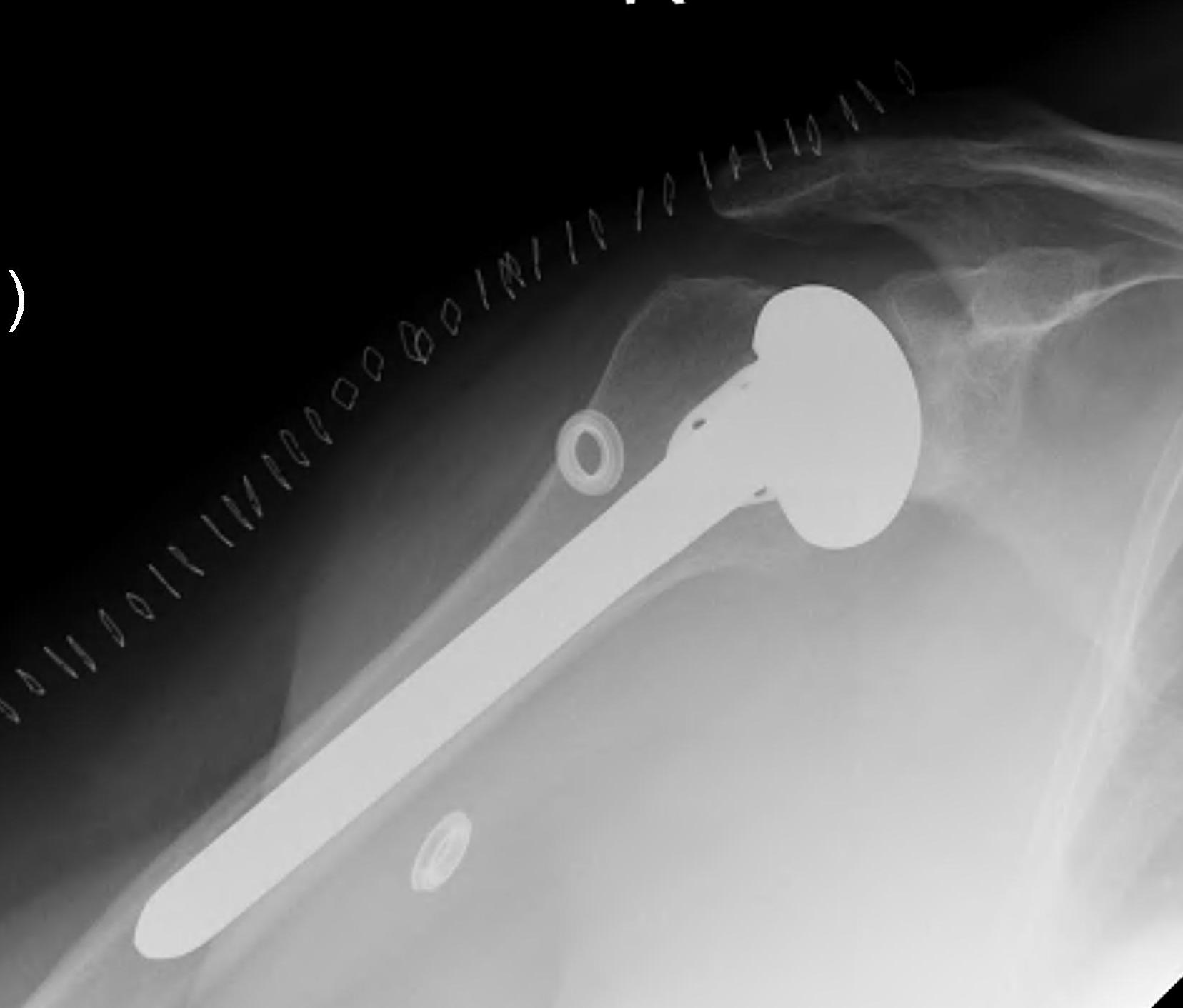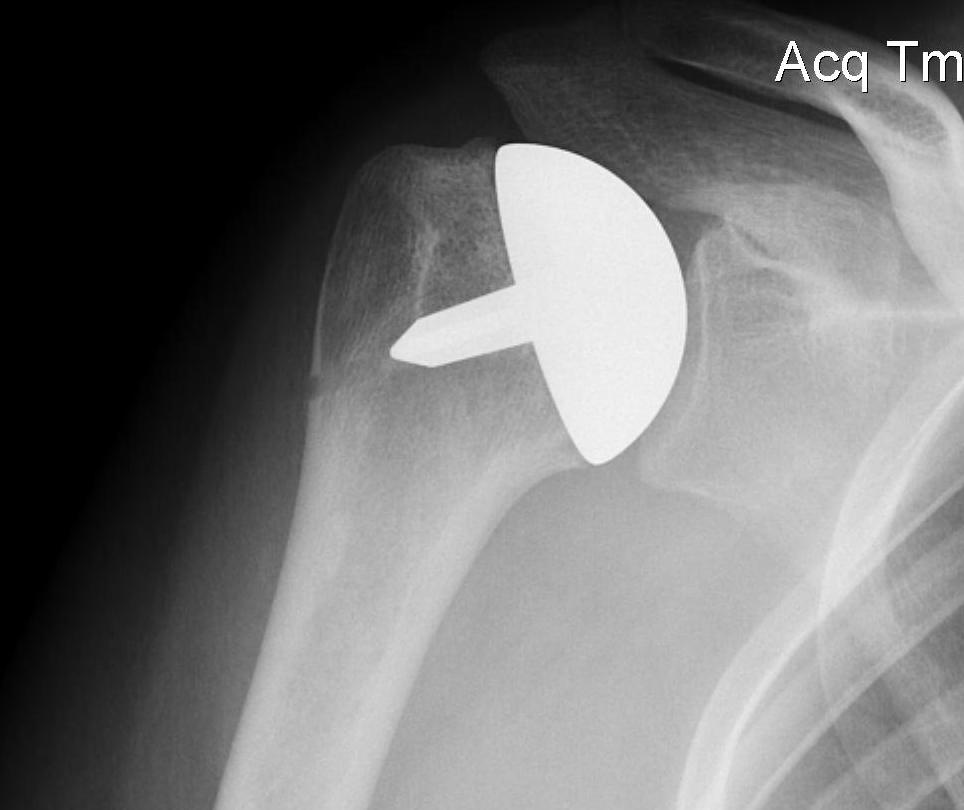Advantage
Fewer complications than TSR
Simpler procedure
Indicated in younger patient
Disadvantages
Glenoid wear after hemiarthroplasty
- potential for medial migration & progressive glenoid wear
- revision to TSR almost always alleviates symptoms
Hemiarthroplasty V TSR for OA
Sandow et al J Should Elbow Surg 1999
- study randomized after inspection of glenoid
- less pain with TSR
- high revision rate in Hemiarthroplasty for glenoid wear over time
- had to cease study as TSR results significantly superior
Lo et al JBJS Am 2005
- metanalysis
- TSR superior pain relief / active ROM / patient satisfaction
Similar in AVN and fracture
Less clear for RA
- risk of glenoid component loosening
Hemiarthroplasty + Biological Resurfacing
Elhassen et al JBJS Am 2009
- 13 patients average age 34
- glenoid resurfacing with achilles allograft
- 10/13 required revision at average 14 months for pain
- all had glenoid wear with no evidence of allograft
Indications Hemiarthoplasty
1. Normal glenoid
- AVN / trauma
- replace glenoid later if needed
- simple procedure for elderly
2. Young patient
3. Glenoid insufficient bone stock
Clinical Case
Patient with OA treated with Hemiarthroplasty
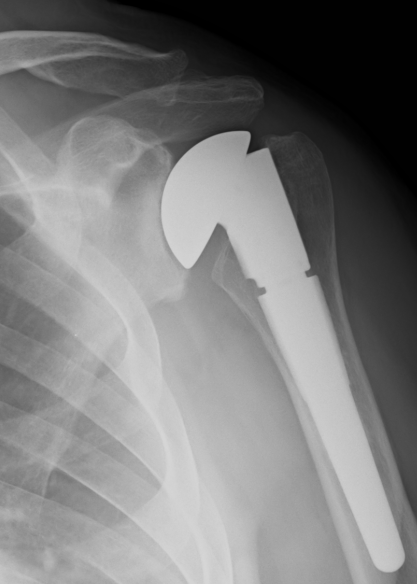
The patient developed pain 2 years later
Infection was excluded with blood tests
CT and bone scan indicative of glenoid wear
US demonstrated intact rotator cuff
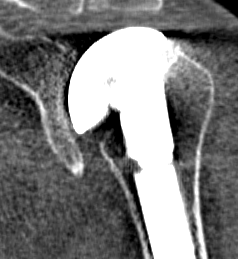
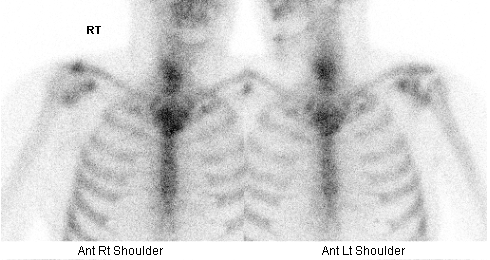
Revision to TSR
- cemented 3 peg glenoid inserted
- modular body removed to access glenoid
- shorter body used to decrease humeral head height
- intra-operative GT Fracture treated with trauma body and sutures
